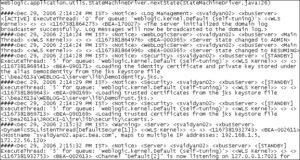Types of Data: Structured & Unstructured
Understanding the different types of data is fundamental to data analytics. Data comes in many forms, but it is broadly classified into Structured and Unstructured data. Knowing how to work with each type helps in choosing the right tools, storage methods, and analytical techniques.
1. Structured Data
Structured data refers to data that is organized in a defined manner, typically stored in rows and columns within relational databases.
- It is easily searchable and often resides in formats such as SQL databases, spreadsheets, or data tables.
- Structured data has a predefined schema—each column has a name and type (e.g., text, number, date).
- It is ideal for quantitative analysis and is used heavily in business intelligence systems.
Examples:
- Customer records with name, age, and location
- Sales transactions with item ID, price, and date
- Employee databases with job roles, salaries, and departments

Advantages:
- Easy to input, store, and retrieve
- Compatible with standard analytics and visualization tools
- More reliable for statistical analysis
2. Unstructured Data
Unstructured data lacks a fixed format or structure. It cannot be stored in traditional row-column databases without preprocessing.
- This includes text-heavy or multimedia content like emails, videos, social media posts, PDFs, and audio files.
- It requires advanced tools and techniques such as Natural Language Processing (NLP), machine learning, or data mining for analysis.
- It makes up over 80% of the world’s data.
Examples:
- Customer service chat transcripts
- Product reviews and feedback
- Video tutorials and surveillance footage
- Social media updates and hashtags

Advantages:
- Rich in context and qualitative insights
- Ideal for analyzing customer behavior, sentiment, and trends
- Can reveal patterns that structured data alone might miss
Comparing Structured vs Unstructured Data
| Feature | Structured Data | Unstructured Data |
|---|---|---|
| Format | Organized in rows and columns | No predefined format |
| Storage | Relational databases (e.g., MySQL) | Data lakes, cloud storage, NoSQL |
| Analysis | Standard analytics, SQL, BI tools | Requires AI, NLP, advanced algorithms |
| Example | Sales spreadsheets | YouTube videos, Tweets, Blogs |
| Use Case | Operational reporting, dashboards | Customer sentiment, trend prediction |
Conclusion
Both structured and unstructured data are valuable in analytics. While structured data offers precision and ease of analysis, unstructured data provides depth and real-world insights. As future analysts, students must become comfortable working with both forms to fully unlock the power of modern data-driven decision-making.